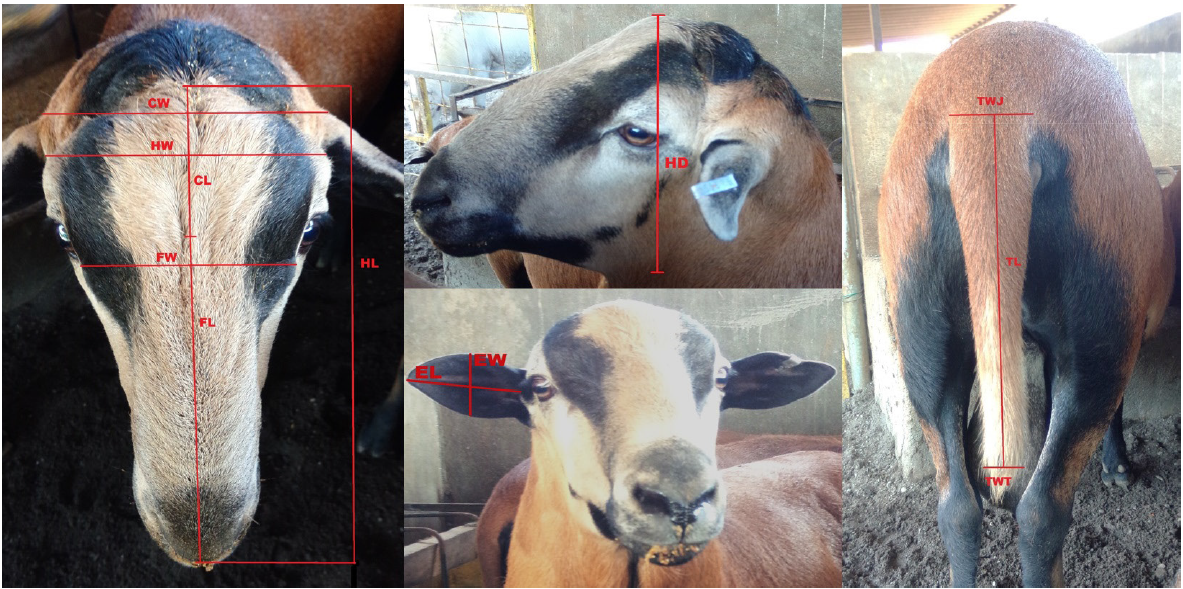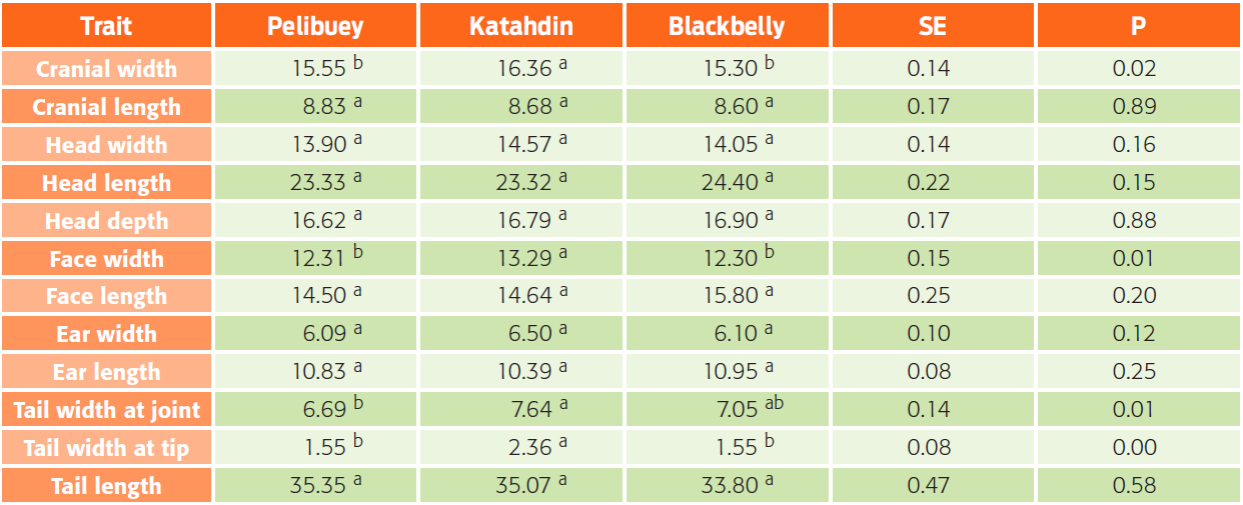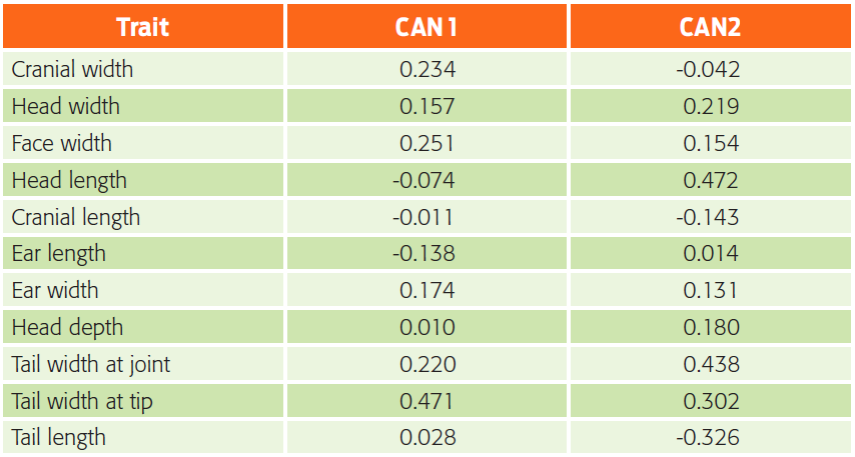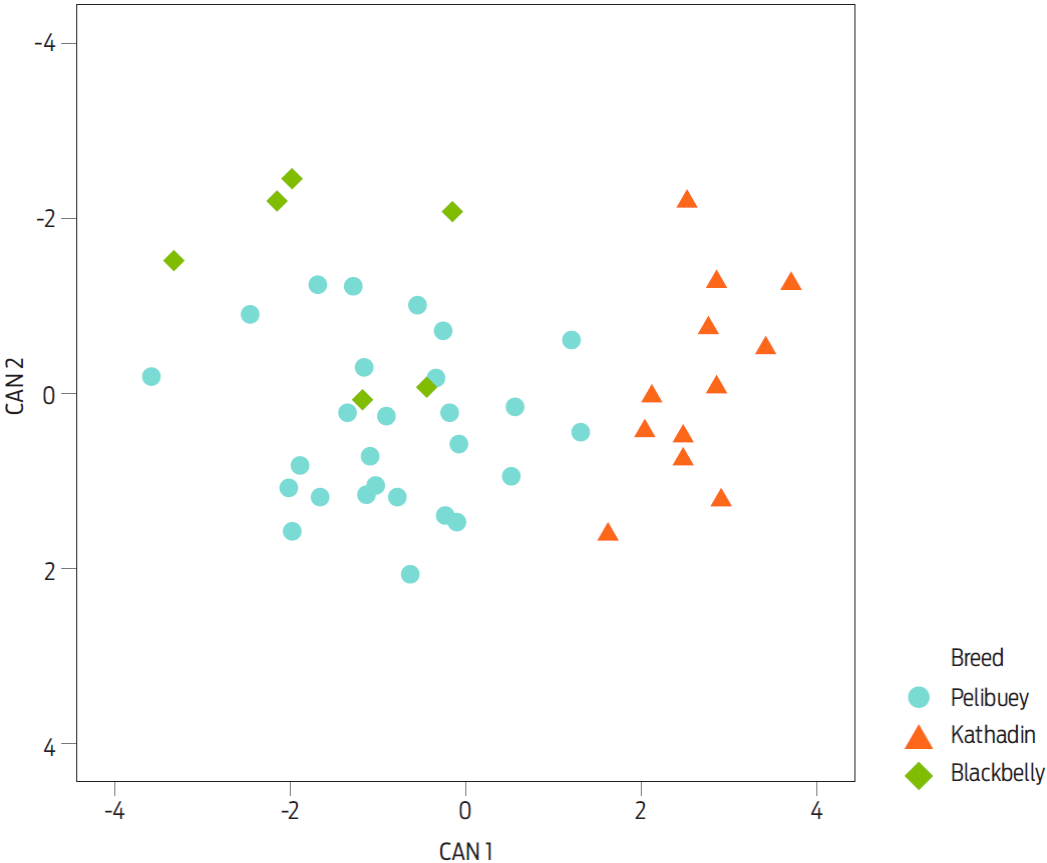Introduction
Pelibuey and Blackbelly were the first hair sheep breeds introduced to Mexico, and they are the basis of tropical sheep production in the country and in the state of Colima (Romualdo et al., 2004; Dzib et al., 2011; Arredondo et al., 2016). Both are reared and managed under the same production system and share important characteristics, such as non-seasonal reproductive activity, high fertility and prolificacy as well as considerable adaptability to heat, humidity, parasites, food scarcity, and other harsh environmental conditions (González et al., 1992; Carrillo and Segura,1993; Wildeus, 1997; Dzib et al., 2011).
In recent years, the genetic improvement of the Pelibuey and Blackbelly breeds has been oriented towards weight gain, feed conversion efficiency, and carcass yield, which are often through misdirected crossbreeding with specialized and imported breeds (mainly Katahdin). This has led to the loss of genetic diversity, in this breeds and a lack of morphological, reproduction and production characteristics of these (Romualdo et al., 2004; Vilaboa et al., 2010; Arredondo et al., 2013).
In various countries, along with genetic studies, this problematic has been addressed through phenotypic characterization studies (Arora et al., 2010; Salako, 2013; Gwala et al., 2015). Phenotypic characterization is a widely used technique that allows for identification of distinctive characteristics in breeds and has become the basis for differentiating between groups and/or breeds (Gomes et al., 2016), and the Food and Agriculture Organization has emphasized that the information provided by these studies is essential for planning the management of animal genetic resources (FAO, 2012).
Among the body measurements that can be used in phenotypic studies, caudal measurements are a significant morphological characteristic used to classify sheep breeds around the world (Gizaw et al., 2011; Handiwirawan et al., 2011). Additionally, because cephalic measurements are not influenced by environmental factors or management, they are very important for breed type characterization (Herrera and Luque, 2009).
Hair sheep breeds like Pelibuey and Katahdin share phenotypic characteristics, such as hair coat and the absence of horns and wool (AMCO, 1998). Considering that the color of the Blackbelly hair coat is a dominant genetic trait in crosses with other hair breeds and the high cost of genetic characterization tests, it becomes important to develop a tool that uses a phenotypic comparison based on morphological characteristics that can provide a reasonable representation of the genetic differences among these breeds. Therefore, the objective of this study was, therefore, to characterize, compare, and analyze the cephalic and caudal morphologies of Pelibuey, Katahdin and Blackbelly rams in the state of Colima, Mexico.
Materials and methods
The study was conducted in the state of Colima, Mexico, located in the middle of the Pacific coast between latitudes 18°41′ N and 19°39′ N and longitudes 103°30′ W and 104°41′ W. The climate is warm and subhumid with summer rains. The average annual temperature and rainfall fluctuate between 23 °C and 1,233.4 mm for the north zone to 26.4 °C and 801.7 mm for the coastal area (INEGI, 2010).
A group of 53 rams up to 2 years of age (determined by dentition), composed of 29 Pelibuey, 14 Katahdin and 10 Blackbelly were studied. Rams were acquired from breeders in the region as purebred; most lacked registration, but each met the phenotypic standards of the Mexican Association of Sheep Breeders for its respective breed (AMCO, 1998). According to Sarma (2006) and Pares (2009), rams were scored for 12 cephalic and caudal measurements as follows:
Cranial width: distance between the bases of the horns; cranial length: distance from the central point of the frontonasal suture to the middle point of the nuchal crest; head width: distance between the two zygomatic arches; head length: distance between the highest points of the parietals to the middle of the rostral margin of the incisive bone; head depth: distance between the anterior surface of the frontal bone and the most convex point of the mandibular branch; face width: distance between the caudal extents of the orbital rims; face length: distance from the frontonasal suture to the center of the incisive bone; ear width: transverse distance from the middle of the ear; ear length: rectilinear distance from the ear bottom to the tip; tail length: rectilinear distance from the tail base to the tip; tail width at the joint: transverse distance from the tail base; and tail width at the tip: transverse distance from the tail tip (Figure 1).

Figure 1: Cephalic and caudal measurements: HL = head length, HW = head width, HD = head depth, CL = cranial length, CW = cranial width, FL = face length, FW = face width, EL = ear length, EW = ear width, TL = tail length, TWJ = tail width at the joint, TWT = tail width at the tip
The influence of the breed on the cephalic and caudal measurements was analyzed using the PROC GLM procedure of SAS as a completely randomized design, and the LSD test was used when differences were found among treatments. The model was Yij = μ + Bi + eij where Yij = dependent variable, μ = overall mean, Bi = fixed effect of the ith breed (Pelibuey, Blackbelly and Katahdin) and eij = random residual error associated with record of each animal. Model effects were declared significant at P < 0.05. Because some of the measurement variables were not normally distributed (Shapiro-Wilk normality test, P < 0.05), data were log-transformed to bring their distributions close to normal.
Subsequently, the PROC CANDISC of SAS was used to perform canonical discriminant analysis and calculate the Mahalanobis distance, derived canonical functions (linear combinations of the continuous variables that summarize the variation between the three sheep breeds) and to give a visual interpretation of the differences among these breeds. Additionally, the ability of these canonical functions to assign each individual sheep to its breed group was calculated as the percentage of each breed that was correctly assigned of each breed. Previously, Wilks’ lambda was used for testing whether the discriminant function was significant (Yakubu and Ibrahim, 2011; Asamoah-Boaheng and Sam, 2016; Gomes et al., 2016).
Results and discussion
Katahdin rams had a greater cranial width, face width and tail width at the tip than Pelibuey and Blackbelly rams (P ≤ 0.02). The tail width at the joint was greater (P = 0.01) in Katahdin than in Pelibuey rams, while Blackbelly rams had intermediate values (Table 1).
Table 1: Cephalic and caudal measurements (in centimeters) of the three hair breeds of rams in Colima, Mexico

Different letters on the same line represent significant differences (P < 0.05).
The hypothesis that the cephalic and caudal measurements means are equal in the analyzed individual rams was tested using Wilks’ Lambda distribution. This parameter had significant value of 0.196 (χ 2 = 73.24, n = 22, P = 0.0001), showing that the differences among the breeds were significantly different from zero. The canonical discriminant analysis identified two significant (P < 0.001) canonical areas, CAN1 and CAN2, which accounted for 92% and 8% of the total variation, respectively. Katahdin rams were separated from Pelibuey and Blackbelly rams by tail widths at the tip, whereas the head lengths and tail widths at the joint could differentiate between Pelibuey and Blackbelly rams (Table 2; Figure 2).
Table 2: Matrix structure coefficients of the canonical discriminant analysis of the three hair breeds of rams in Colima, Mexico


Figure 2: Bi-dimensional representation of the canonical variables associated with rams sampled in Colima, Mexico
All Katahdin rams were correctly assigned within their breed group, while most of Pelibuey rams (58.60%) were erroneously grouped as Blackbelly rams. Likewise, a substantial proportion of the Blackbelly rams (40%) were misclassified as Pelibuey rams (Table 3).
In Mexico, previous studies have measured the morphological variations among Pelibuey, Katahdin and Blackbelly breeds; however, they have focused on assessing live weights and thoracic and rump measurements, mainly in ewes and ram lambs. Vilaboa et al. (2010) found that live weight was the largest source of variation between Pelibuey and Katahdin ewes, whereas thoracic, abdominal and neck perimeters largely elucidated the variations among Pelibuey, Katahdin and Blackbelly lambs (López-Carlos et al., 2010). In the first of the aforementioned studies, Katahdin ewes showed longer head width. By contrast, Pelibuey ewes had longer ears. In this regard, the average length of the Pelibuey ram ear (10.83 cm) was significantly greater than the value obtained (9 cm) in an early study (Ruz, 1966).
Consistent with earlier research, the tail forms and shapes are significant morphological characteristics used to classify sheep, which are related to the evolutionary history of founding sheep breed populations. In Ethiopia, 14 sheep breeds were categorized based on this trait (Gizaw et al., 2011). In Indonesia, tail widths and tail lengths were some of the differentiation variables used for classifying five sheep breeds (Handiwirawan et al., 2011). It should be noted that the length of the Pelibuey ram tail averaged 35.35 cm, while previous studies indicated that a distinctive characteristic of this breed was the presence of a short tail with a length that was between approximately 20 and 22 cm (Ruz, 1966; Cyrman, 1982). This finding, together with the increase in ear length, may be a consequence of a hybridization process with the Katahdin breed.
The misclassification of Pelibuey rams into the Blackbelly breed and vice versa can be explained by the co-evolution of these two breeds in the tropics of Mexico. In addition to sharing certain characteristics, such as non-seasonal reproductive activity, high fertility and prolificacy as well as considerable adaptability to heat, humidity, parasites and scarcity of feed, producers have allowed and encouraged their breeding. The misclassification of Pelibuey rams into the Katahdin breed confirms the hybridization between these breeds. Over many years, Pelibuey have been crossbreeding with Katahdin to rapidly increase body height, width and length for the principal sire breeders of Mexico. Coincidently, Bravo and Sepulveda (2010) concluded that the variability in cephalic measurements found in Aracauno Creole ewes are a consequence of crossbreeding with imported meat breeds, such as Suffolk. It should be noted that the occurrence of black hair in Pelibuey and Katahdin breeds helps more clearly identify the inheritance from the Blackbelly breed.
From the perspective of production performance, it is important to know the degree of genetic purity or hybridization of these breeds. Although some studies have shown that Katadhin is one of the predominant tropical meat producer breeds, Katahdin ewes have the lowest prolificacy and the longest lambing interval among American hair sheep breeds (Atto, 2007). Furthermore, Pelibuey ewes mated to Katahdin rams produce heavier litters than those mated to Pelibuey rams (Macías et al., 2012). This demonstrates that although it is important to increase sheep meat production in the tropics through crossbreeding local breeds such as Pelibuey and Blackbelly with synthetic breeds like Katahdin, this must be performed through terminal crossbreeding (Cienfuegos et al., 2010).
Conclusions
Although Pelibuey, Blackbelly and Katahdin rams meet the standards of their respective breeds, phenotypic characterization using canonical discriminant analysis demonstrated the existence of a high degree of hybridization among the breeds and showed that the head length, tail width at the tip and tail width at the joint were the most discriminating variables to identify and separate the three sheep breeds.











 texto en
texto en 



